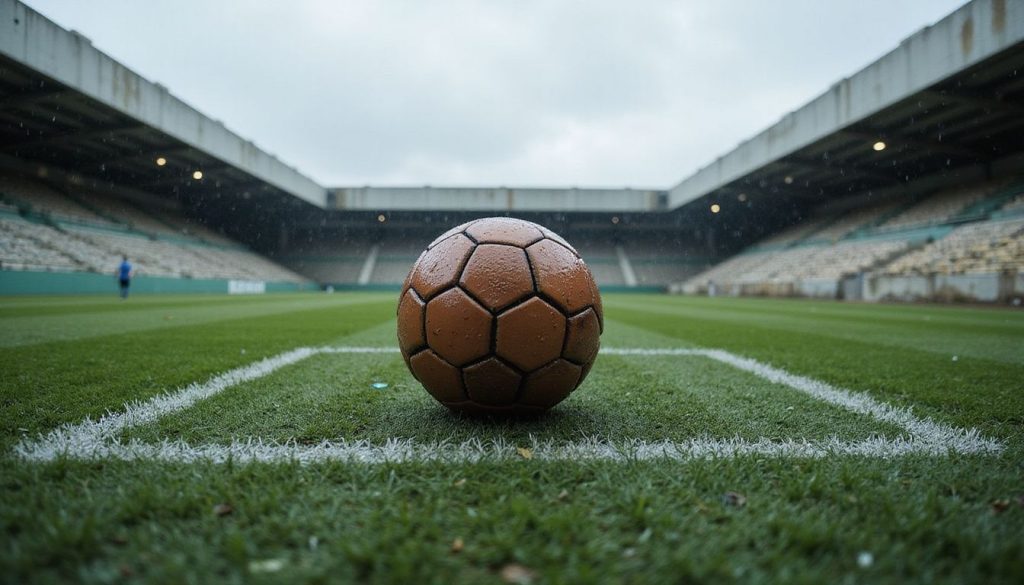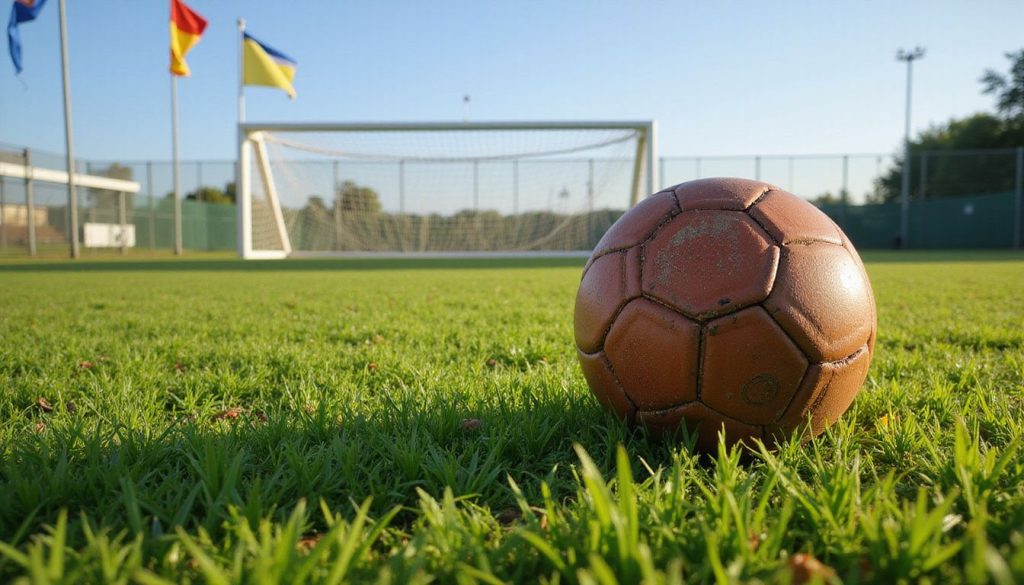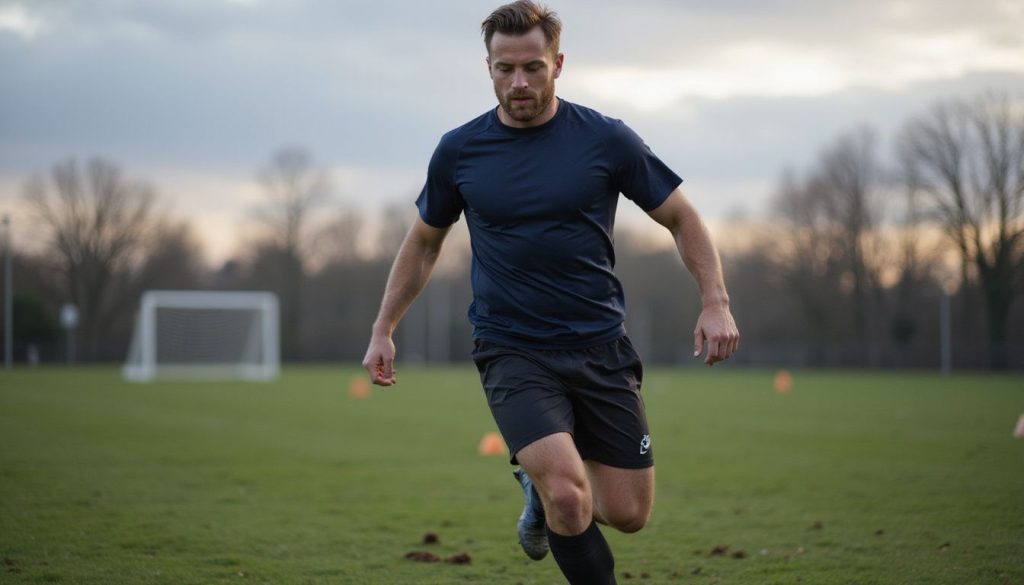Bodyweight Exercises For Soccer Players
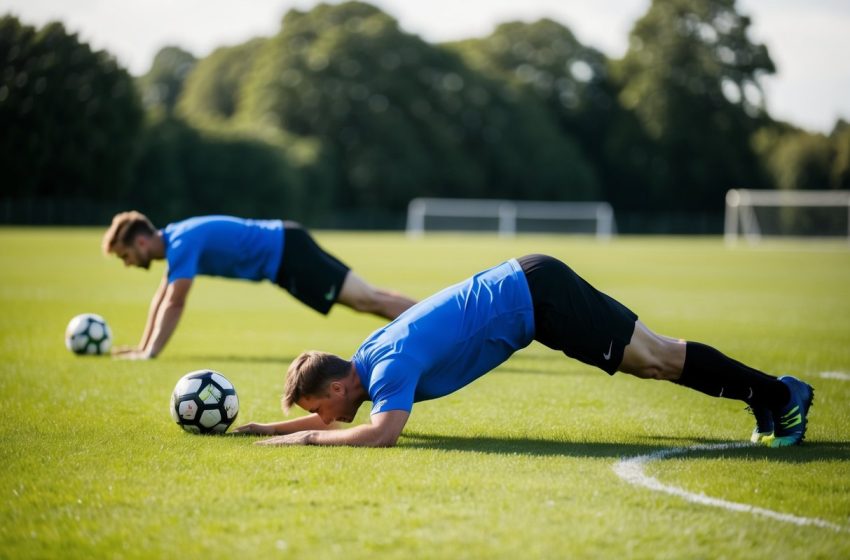
Bodyweight Exercises for Soccer Players: Boost Strength and Agility Anywhere
Playing soccer takes more than skill with the ball—it takes strength, speed, and balance too. Bodyweight exercises can help you build all of these without any equipment, making them perfect for at-home training or workouts at the park. With the right bodyweight training, you will boost your power, stay injury-free, and improve how you handle tough challenges on the field.
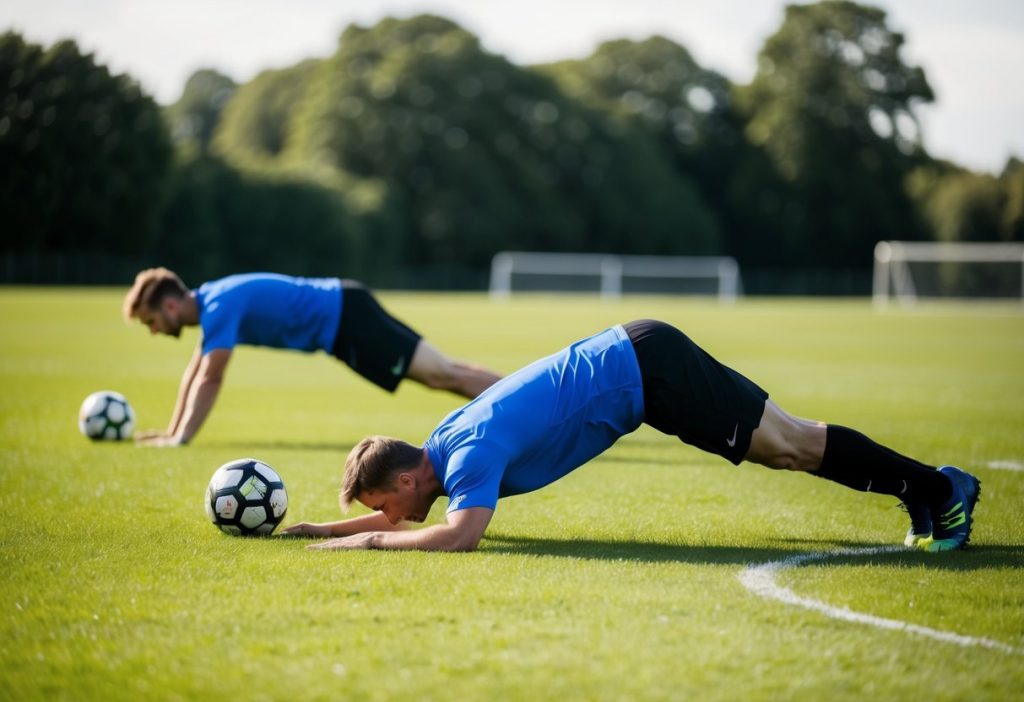
You don’t have to spend hours in a gym or lift heavy weights to get strong for soccer. Push-ups, lunges, planks, and similar moves target the muscles you use most in games. Your core, legs, and upper body will all get better, helping you keep your balance, sprint faster, and hold your own during contact.
If you want to be a player who’s harder to knock down and quicker to react, adding bodyweight exercises to your routine is a smart choice.
Benefits of Bodyweight Exercises for Soccer Players

Bodyweight exercises offer many advantages for soccer players, from building muscle strength to helping keep you on your feet during tough matches. These workouts use your own body as resistance, making them practical for both training and game performance.
Enhancing Strength and Power
Using bodyweight exercises like squats, lunges, and push-ups can increase your lower body and core strength. These muscles are essential for sprinting, kicking, and tackling. Soccer often requires quick bursts of power—bodyweight training helps you develop that explosive speed.
Power training with bodyweight moves also supports your jump height and acceleration. Forwards, defenders, and midfielders rely on this strength and power to win headers and stay strong during challenges.
You do not need heavy weights to see results. Regular bodyweight workouts can help you build muscle, improve your endurance, and support a leaner physique. This lets you play harder, recover faster, and stay energetic throughout the match.
Boosting Balance and Stability
Good balance is important for dribbling, passing, and avoiding opponents. Bodyweight exercises such as single-leg squats and planks target core and stabilizer muscles, which improve your control when moving quickly on the field.
Working on your balance and stability helps you stay upright during fast turns or when you are bumped by another player. These exercises train your body to keep steady and react quickly, which is key in close matches.
Better stability also supports your coordination and spatial awareness. The more control you have over your movements, the easier it is to keep the ball and make smart plays under pressure.
Injury Prevention Advantages
Bodyweight exercises are gentle on your joints but still build up important muscle groups around your knees, ankles, and hips. Stronger muscles and tendons reduce your risk of injuries like sprains and strains.
Training with your body weight helps you spot and fix muscle weaknesses that could grow into bigger problems. Many of these exercises also stretch and lengthen your muscles, making you more flexible and less likely to get hurt during play.
Consistent bodyweight work supports faster recovery after games. Your body learns to handle physical stress better, which lets you return to practice or competition with less downtime.
Essential Lower Body Bodyweight Movements

Building strong legs and hips is key for any soccer player. Your ability to run, change direction, and kick with power depends a lot on specific lower body muscles like your glutes, hamstrings, and quads.
Squats for Soccer Relevance
Squats are simple but important. They work your quads, hamstrings, and glutes at the same time. This helps you sprint faster and jump higher on the field.
When you do a squat, keep your chest up, back straight, and feet shoulder-width apart. Lower yourself until your thighs are parallel with the ground. Push through your heels to stand up. For more challenge, try split squats or single-leg squats.
Squats make your legs stronger and help protect your knees. This is helpful when you need to tackle, block, or absorb contact during play.
Lunges and Forward Lunge Progressions
Lunges help you build balance, strength, and coordination. A forward lunge targets your quads, glutes, and even your calves. This move also mimics many soccer actions, like stopping quickly or controlling the ball.
Start by stepping forward with one leg and bending your knees, keeping your front foot flat and your back knee close to the ground. Push back to your starting position and repeat on the other side.
As you get stronger, move on to jumping lunges or walking lunges. These progressions add power and stability, which you need for running and changing direction on the pitch.
Glute Activation Strategies
Strong glutes give you the power to sprint, kick, and jump. Many players have weak glutes without knowing it, so it’s important to include moves that target these muscles directly.
Simple exercises like glute bridges, single-leg bridges, and standing hip abductions warm up your glutes before practice or a game. These moves help you avoid injuries and improve your top speed.
Activating your glutes also helps you maintain good form in squats and lunges. If your glutes work well, your hamstrings and lower back don’t have to pick up the slack.
| Exercise | Focus | How It Helps |
|---|---|---|
| Glute Bridge | Glutes | Builds strength and power |
| Single-leg Bridge | Glutes | Improves control and balance |
| Hip Abduction | Glutes | Supports hip stability |
Hamstring-Focused Variations
Your hamstrings are important for sprinting, kicking, and staying injury-free. Soccer players need strong hamstrings because these muscles slow down your leg quickly and help you change direction.
Try exercises like single-leg Romanian deadlifts or standing leg curls using your own body weight. Nordic hamstring curls are harder but very effective for building strength and lowering injury risks.
Focus on slow, controlled movements to really feel your hamstrings working. Strengthening your hamstrings helps balance your leg muscles, cutting down the chance of muscle pulls or strains while playing.
Upper Body and Core Bodyweight Exercises

Building upper body and core strength helps you win tackles, stay balanced, and shield the ball. These exercises use your body weight and can be done almost anywhere, making them great for soccer training.
Push-Ups for Strength and Endurance
Push-ups target your chest, shoulders, and triceps. They also engage your core and back muscles. They are easy to do without any equipment and can be modified to fit your level.
Doing push-ups regularly improves your upper body strength. You gain power for throw-ins and shielding the ball from opponents. For extra challenge, try wide-grip, diamond, or decline push-ups.
Tips for better push-ups:
- Keep your body straight like a plank.
- Lower your chest till it almost touches the ground.
- Push up without letting your hips sag.
Below is a guide:
| Variation | Main Focus | Difficulty |
|---|---|---|
| Standard | Chest, triceps | Beginner |
| Wide-grip | Chest | Intermediate |
| Diamond | Triceps | Advanced |
| Decline | Shoulders | Advanced |
Add 3 sets of 8-15 reps to your normal workout for results.
Core Stability Drills
A strong core helps you turn quickly and maintain balance during games. It protects your lower back and allows faster reactions when you change directions.
Key core exercises include crunches, bicycle kicks, leg raises, and Russian twists. Each targets different muscles, including your abs and obliques. These moves make it easier to keep your footing in tackles and avoid injuries.
You can do core drills on a mat or the grass. Start slow and focus on form. Here is a simple routine:
Core Circuit Example:
- 10 crunches
- 10 leg raises
- 10 bicycle kicks
- 10 Russian twists
Repeat this circuit 2-3 times, resting 30 seconds between sets.
Dynamic Plank Variations
Planks train your whole core, shoulders, and even your legs if you use more advanced versions. Keeping your body steady while holding a plank teaches your muscles to work together.
Try forearm planks, side planks, plank with shoulder taps, and even plank jacks to mix things up. Each variation adds a new challenge and works different muscle groups.
Tips for better planks:
- Keep your elbows under your shoulders.
- Stay in a straight line from your head to your heels.
- Avoid letting your hips drop or rise.
Aim for 20-30 seconds per plank, then increase your time as you get stronger. Alternate between regular and dynamic plank variations to get the most benefit.
Plyometric and Power-Driven Routines

Using your body weight, you can build explosive power, boost your speed, and improve the way you move on the field. Simple routines and targeted drills help develop the strength and quickness needed for soccer.
Explosive Jumping Techniques
Jumping exercises help you become more powerful, especially in your legs and core. Moves like squat jumps, box jumps, and tuck jumps are simple but effective. You don’t need fancy equipment—just your body and maybe a sturdy surface to jump onto.
Squat jumps:
- Stand with your feet shoulder-width apart.
- Lower into a squat and then explode upward into a jump.
- Land softly and repeat.
Box jumps:
- Find a platform or bench at a safe height.
- Jump with both feet, landing with bent knees.
- Step down and repeat.
Adding 3 sets of 8-12 reps, with rest in between, will challenge your muscles while improving your vertical leap.
Speed and Agility Drills
Quick feet and rapid changes in direction are key for soccer. Agility training can be done in small spaces with bodyweight moves. Focus on drills that mimic movements you’ll use in games.
Here are simple drills to try:
- Lateral bounds: Jump side to side, landing on one foot, to build side-to-side speed.
- High knees: Run in place, driving your knees up quickly to boost quickness and coordination.
- Cone shuffles: Set two cones apart. Shuffle quickly between them, staying low to the ground.
Aim for 20-30 seconds of effort, resting briefly, for 3-5 sets per drill. These drills help you react faster and move with more control.
Plyometric Conditioning for Soccer
Focus on routines that develop strength while improving stamina. Plyometric circuits mix jumping, sprinting, and balance moves to prepare your whole body for intense play.
Try this sample routine:
- Jump squats – 10 reps
- Broad jumps – 8 reps
- Single-leg hops – 8 reps each leg
- Push-up with clap – 8 reps
Rest 60 seconds and repeat 3-4 times.
Mixing these exercises teaches your muscles to react quickly and powerfully. Consistent plyometric training helps reduce your risk of injury while you work on your power, stability, and endurance.
Flexibility and Recovery in Bodyweight Training
Flexibility and recovery are important for soccer players to move better and avoid injury. Bodyweight training can also help loosen tight muscles and increase your range of motion if you use the right exercises.
Dynamic Stretching Methods
Dynamic stretching helps get your body ready for action. Unlike static stretching, dynamic moves keep you moving and warm up your muscles. You can use these before bodyweight workouts or a soccer match.
Examples of dynamic stretches:
- Leg swings (front to back and side to side)
- Walking lunges with a twist
- High knees
- Butt kicks
- Arm circles
Do these exercises for about 10-15 minutes before training. Keep each movement gentle and controlled—not rushed. This helps wake up your muscles, improves flexibility, and gets your blood flowing.
Dynamic stretching can also help lower your risk of muscle pulls. Many coaches recommend always starting with these to get your muscles loose and ready.
Post-Workout Mobility Routines
After your workout, your muscles are warm but may feel tight. Focusing on mobility and flexibility now helps your body recover.
You should do stretches that hold each position for 20-30 seconds. Common moves include:
- Hamstring stretch
- Quadriceps stretch
- Calf stretch
- Hip flexor stretch
- Child’s pose
- Shoulder stretch
Doing these stretches helps release muscle tension. It may also reduce soreness after hard training. Some athletes also use foam rolling, which can help your muscles relax even more.
Try to stay consistent. Regular post-workout mobility routines can make you more flexible and improve how fast you recover from bodyweight training or matches.
Frequently Asked Questions
There are many ways you can use bodyweight exercises to get stronger and faster for soccer. These exercises target your legs, core, and upper body, and you do not need any fancy equipment.
What are effective bodyweight exercises that soccer players can do at home?
You can do lunges, squats, push-ups, split squats, and bear crawls at home. These moves help you build strength in your legs, core, chest, and arms.
Adding planks and mountain climbers is also helpful. These exercises increase your core stability for better movement on the field.
Which beginner-friendly bodyweight exercises are recommended for soccer players?
Start with basic squats, lunges, and push-ups. These are easy to learn and safe for most beginners.
Bridge lifts and calf raises are also simple exercises that help strengthen your lower body. You do not need much space or equipment to try these at home.
How can calisthenics benefit soccer players in their training regimen?
Calisthenics, like push-ups, lunges, and planks, improve your strength and coordination. These exercises also help you move more powerfully and support injury prevention.
You work several muscles at once, which builds balance and helps you react faster during games.
What are the best bodyweight exercises to improve soccer performance?
Split squats, bodyweight squats, and lunge variations are some of the best moves for building leg strength. Push-ups and bear crawls help with upper body and core strength.
Reverse lunges and high knees improve your agility and endurance.
Can soccer players enhance their strength with bodyweight exercises alone?
Yes, you can get stronger with bodyweight exercises if you work hard and stay consistent. These moves use your body’s resistance to build muscle and power.
If you want to keep improving, try harder versions or do more reps over time.
What bodyweight exercises can soccer players incorporate with weights?
You can add weights to split squats, lunges, and squats for extra challenge. Weighted sprints and calf raises with dumbbells help build explosive strength.
Try holding a weight during planks or Russian twists to train your core even harder.

